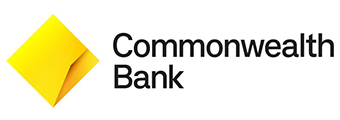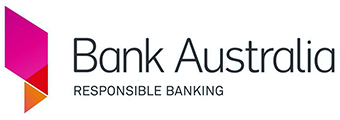Fact Checked
Home Compare Credit Cards
Compare Credit Cards
Compare some of the best Australian credit card offers and deals. Discover rewards programs, low interest rates, balance transfers, and more—all in one place.
Rates updated 3 hours ago
Credit card | |||||||||||||
|---|---|---|---|---|---|---|---|---|---|---|---|---|---|
| N/A | 0 | [Overseas ATM withdrawal: $5 Minimum credit limit $1, 000 Maximum credit limit: $25, 000 Annual fee waived for the first year, ] | 0 | 0 | 15 | $product[$field["value"]] | 12.99 | Visa | More details | ||||
MOVE Bank Low Rate Credit Card | |||||||||||||
| N/A | 0 | [A low $49 annual fee but you pay NO FEE if you spend a minimum of $12, 000 annually after the first year Minimum Credit Limit $1, 000.00 Replacement card fee Domestic $7.00 Google Pay, ] | 0 | 0 | 20 | $product[$field["value"]] | 9.95 | Visa | More details | ||||
Greater Bank Visa Credit Card | |||||||||||||
| N/A | 0 | [Up to 58 days interest-free credit. Competitive low interest rate on purchases Low annual fee of $39 - waived if you make purchases of more than $8, 000 a year. Accepted at more than 24 million outlets worldwide - just look for the VISA symbol. Can be linked with up to two other Bank of us accounts ensuring you only have to carry the one card. Option to make balance transfers from existing cards - treated the same way as a purchase with up to 58 days interest free. Minimum credit limit $500, ] | 0 | 0 | 20 | $product[$field["value"]] | 9.99 | Visa | More details | ||||
Disclosure | |||||||||||||
Bank of us Visa Credit CardDisclosure
| |||||||||||||
| N/A | 0 | [A special interest rate of 7.90% pa for the first 6 months, then a low 11.50% pa ongoing rate No annual fee Up to 55 days interest free on purchases Credit Limits from $1, 000 to $25, 000 $10 payable when you request a replacement card. Apple Pay, Android Pay, Google Pay, Samsung Pay , ] | 0 | 0 | 10 | $product[$field["value"]] | 11.5 | Visa | More details | ||||
UniBank Credit Card | |||||||||||||
| N/A | 0 | [Minimum Credit Limit $1, 000 0% interest on balance transfers for 12 months Apple Pay, Google Pay, Samsung Pay, ] | 0 | 0 | 20 | $product[$field["value"]] | 11.8 | Visa | More details | ||||
Disclosure | |||||||||||||
Heritage Bank Visa Gold Low RateDisclosure
| |||||||||||||
| N/A | 0 | [11.95% for purchases 14.80% for cash advances Up to 52 days interest free on purchases Enjoy the financial flexibility and convenience of a credit card without the pain of high interest charges. Additional cardholder option at no extra cost, provided they are over 16 years of age. Visa Global Customer Assistance with 24 hour worldwide emergency hotline for lost and stolen cards. Minimum credit limit $500 Card Replacement Fee $10.00, ] | 0 | 0 | 5 | $product[$field["value"]] | 14.8 | Visa | More details | ||||
Disclosure | |||||||||||||
BCU Bank Classic VisaDisclosure
| |||||||||||||
| N/A | 0 | [11.99%p.a. on purchases - Enjoy an amazingly low 11.99% on purchases. $0 annual fee in first year ($49 thereafter)4 Up to 55 days interest free-No interest on purchases for up to 55 days.3 Minimum Credit Limit $500 Apple Pay, Google Pay, ] | 0 | 0 | 12.5 | $product[$field["value"]] | 21.74 | Mastercard | More details | ||||
Disclosure | |||||||||||||
Great Southern Bank Low Rate Credit CardDisclosure
| |||||||||||||
| N/A | 0 | [Credit limits starting from $1, 000 Replacement Card Fee $10.00 Apple Pay, Android Pay, Google Pay, Samsung Pay, ] | 0 | 0 | 25 | $product[$field["value"]] | 11.99 | Visa | More details | ||||
Disclosure | |||||||||||||
Beyond Bank Low Rate Visa Credit CardDisclosure
| |||||||||||||
| N/A | 0 | [A low rate credit card for all your transactions, cash advances and balance transfers. One fee for up to four (4) cards. Up to 55 days interest free on purchases. Minimum credit limit $500 Domestic Credit card replacement fee $20, ] | 0 | 0 | 5 | $product[$field["value"]] | 11.99 | Visa | More details | ||||
Newcastle Permanent Value+ Credit Card | |||||||||||||
| N/A | 0 | [The convenience of Visa payWave allowing you to make purchases under $100 in seconds by holding your card against the payWave terminal. A low rate of 13.49% p.a. on retail purchases. Exclusive Visa Entertainment offers. Suncorp Clear Options Standard Credit Card Introductory offer of 0% p.a. for 20 months on balance transfers applies. Your total Balance Transfers may not exceed 80% of your Credit Limit. The 0% p.a. interest rate will apply to balances transferred with this offer, and the balance transfer fee, for a period of 20 months. The 20 months promotional period commences when the Balance Transfer is processed, and you must make the Balance Transfer request within the first 3 months from approval to receive this offer. This offer is valid until 28 August 2024. Apple Pay, Samsung Pay, ] | 0 | 0 | 30 | $product[$field["value"]] | 21.99 | Visa | More details | ||||
Suncorp Bank Clear Options Standard | |||||||||||||
| N/A | 0 | [$0 annual fee. 4.99% intro rate for the first 5 months. Low variable interest rate of 12.34% p.a.. $0 fee for additional cards. Minimum credit limit $1, 000.00 Apple Pay, Google Pay, ] | 0 | 0 | 0 | $product[$field["value"]] | 12.34 | Visa | More details | ||||
Bank Australia Limited Trading as Qudos Bank Lifestyle credit card | |||||||||||||
| N/A | 0 | [* Up to 55 days interest free on purchases. * No annual fee. * A low everyday interest rate. * payWave facility. * Ability to register this card for Apple Pay , Google Pay & Android Pay. * Minimum Credit Amount $500 * Visa Card replacement fee $9.00 Apple Pay, Android Pay, Google Pay, Samsung Pay , ] | 0 | 0 | 10 | $product[$field["value"]] | 12.95 | Visa | More details | ||||
Disclosure | |||||||||||||
Horizon Bank Visa Credit CardDisclosure
| |||||||||||||
| N/A | 0 | [LOW ONGOING RATE – lower your interest, not your standards with a low 11.99% p.a. ongoing variable purchase rate SAVE ON BALANCE TRANSFERS – 0% p.a. for 15 months on balances you transfer, 1% BT fee applies (reverts to cash advance rate). Annual fee of $99 (waived after your first year if you spend $9, 600 or more on Eligible Transactions annually) Purchase Rate 11.99% p.a. Effective 15 May 2024, the ongoing purchase rate will increase to 12.99% p.a. Minimum Credit Limit $2, 000 Apple Pay, Samsung Pay , ] | 0 | 29 | 10 | $product[$field["value"]] | 21.69 | Visa | More details | ||||
Virgin Money Low Rate Card | |||||||||||||
| N/A | 0 | [0% p.a. for 24 months on purchases and balance transfers, plus no annual fee for the first year. 3% balance transfer fee applies. New customers only. Limited time. Other fees, T&Cs apply. Enjoy no foreign transaction fees on online or overseas purchases. Plus, complimentary overseas travel insurance. Android Pay, Google Pay, ] | 0 | 0 | 25 | $product[$field["value"]] | 21.99 | Mastercard | More details | ||||
Disclosure | |||||||||||||
Bankwest Breeze Platinum MastercardDisclosure
| |||||||||||||
| [flybuys] | 0 | [Coles Mastercard and flybuys card in one. Maximise your points when you scan your flybuys barcode before you pay. Enjoy 0% p.a. on Balance Transfers for 15 months. 1.5% Balance Transfer fee applies. Reverts to Cash Advance rate. Apply for a Low Rate Mastercard by 30 June 2024. No interest free days apply to Retail Purchases while you have a Balance Transfer. Collect 1 flybuys point per $2 you spend at Coles Supermarkets. Superior Security and fraud protection - the fraud management system and Mastercard’s zero liability guarantee give you peace of mind. Minimum credit limit? $1, 000?, ] | 0 | 10 | 30 | $product[$field["value"]] | 20.74 | Mastercard | More details | ||||
Disclosure | |||||||||||||
Coles Low Rate MastercardDisclosure
| |||||||||||||
| N/A | 0 | [ $400 cashback when you spend $5k in 150 days Enjoy the benefits of our lowest rate on everyday purchases. No Balance Transfer fee applies. Plus, enjoy no annual fee for the first year (usually $59)* Apply by NAB may vary or end this offer at any time. You’ll also enjoy the benefits of our lowest ongoing rate on everyday purchases. Up to 55 days interest free on purchases do not apply with an outstanding balance transfer. Additional cardholder at no extra cost. Your choice of a pink or silver card. Apple Pay, Google Pay, Samsung Pay, ] | 0 | 0 | 15 | $product[$field["value"]] | 21.74 | Visa | More details | ||||
NAB Low Rate Card | |||||||||||||
| N/A | 0 | [0%p.a. on purchases and balance transfers for 18 months reverting to the cash advance rate thereafter. No balance transfer fee. Low interest rate. Low annual card fee. Up to 55 days interest-free on purchases. If you currently have a credit card or store card elsewhere, you can easily transfer the outstanding balance to a Low Rate Visa Card and start saving right away. Samsung Pay, ] | 0 | 15 | 10 | $product[$field["value"]] | 21.99 | Visa | More details | ||||
Disclosure | |||||||||||||
Bank of Queensland Low Rate Visa CardDisclosure
| |||||||||||||
| N/A | 0 | [You get up to $350 cashback when you take out a new Low Rate Credit Card. $50 cashback will be awarded for every month $1000 or more is spent on Eligible purchases for the first seven statement periods from card approval. Eligibility criteria and T&Cs apply. + $59 annual fee. Up to 55 days interest free on purchases when you pay the closing balance of your statement in full by the statement due date. Make the most of the balance transfer by creating a balance transfer repayment plan with SmartPlan., ] | 0 | 0 | 15 | $product[$field["value"]] | 21.99 | Mastercard | More details | ||||
Westpac Low Rate Card (Cashback offer) | |||||||||||||
| N/A | 0 | [1% balance transfer fee applies. This 0% p.a. offer relates to balance transfers requested at card application. The variable cash advance rate will apply after the promotional period. Up to 55 days interest free on purchases when you pay the closing balance of your statement in full by the due date. An additional cardholder at no extra cost. Apple Pay, Google Pay, Samsung Pay, ] | 0 | 0 | 15 | $product[$field["value"]] | 21.99 | Visa | More details | ||||
Disclosure | |||||||||||||
BankSA Vertigo Visa (Balance Transfer Offer)Disclosure
| |||||||||||||
| N/A | 0 | [0% p.a. for 24 months on balance transfers requested at card application. 0% balance transfer fee applies. Rate then switches to applicable variable cash advance rate. New cards only, Eligibility criteria and T&Cs apply. Apply between 7th November 2023 and 31st July 2024. Up to 55 days interest free on purchases when you pay the closing balance of your statement in full by the due date. An additional cardholder at no extra cost. Apple Pay, Android Pay, Google Pay, Samsung Pay, ] | 0 | 0 | 15 | $product[$field["value"]] | 21.99 | Visa | More details | ||||
St.George Vertigo Visa (Balance Transfer Offer) | |||||||||||||
| N/A | 0 | [Enjoy 0% p.a. on purchases for the first 3 months + up to $240 cashback Our lowest interest rate on purchases at 13.24% Control your security and spending - instantly lock international payments, block ATM cash advances and limit your spending through the CommBank app or on NetBank. Minimum credit limit $500 Monthly Fee $6/mo (equivalent to $72 per year) Android Pay, Google Pay , ] | 0 | 0 | 20 | $product[$field["value"]] | 21.99 | Mastercard | More details | ||||
Disclosure | |||||||||||||
Commonwealth Bank Low Rate Credit CardDisclosure
| |||||||||||||
| N/A | 0 | [] | 0 | 0 | 45 | $product[$field["value"]] | 29.99 | Visa | More details | ||||
Disclosure | |||||||||||||
Latitude Financial Services Low Rate MastercardDisclosure
| |||||||||||||
| N/A | 0 | [Enjoys 0% p.a. for 28 months on balance transfers. Reverts to cash advance rate. No interest free days apply to retail purchases while you have a balance transfer. This offer commenced 22 February 2024. We may vary or end this offer at any time. Low variable purchase rate of 14.99% p.a. With Priceless Cities, explore unforgettable experiences in more than 40 cities across the world. To learn more, visit priceless.com. Up to 55 days interest free on retail purchases (unless you have a balance transfer) Access to a Personal Concierge to provide you with information and assistance 24 hours a day, seven days a week. Enjoy Purchase Cover Insurance for lost or stolen items purchased on your card. Other complimentary insurances include Transit Accident Insurance, Extended Warranty Insurance and Guaranteed Pricing Scheme. Apple Pay, Samsung Pay, ] | 0 | 0 | 30 | $product[$field["value"]] | 22.24 | Mastercard | More details | ||||
Disclosure | |||||||||||||
Citi Citi Clear Credit Card (Balance Transfer offer)Disclosure
| |||||||||||||
| N/A | 0 | [Low ongoing interest rate. Low annual fee. Microchip for extra security. Global acceptance of Visa. Access to Visa Entertainment. Visit macquarie.com.au/cards for full details and terms and conditions. Zero liability unauthorised purchases with Visa’s Zero Liability Policy*, ] | 0 | 10 | 20 | $product[$field["value"]] | 15.95 | Visa | More details | ||||
Macquarie Bank RateSaver Card | |||||||||||||
| [Heritage Credits] | 0 | [Up to 55 days interest free for your Visa purchases~ 0% interest on balance transfers for 12 months* Earn three (3) Heritage Credits for every $1, 500 spent per calendar month# Platinum Insurance cover for travel overseas and in Australia, purchases, extended warranties, and more. Annual Fee $125 (Waived when you spend $35, 000/annum and over on Visa Purchases) Minimum credit $6, 000 Apple Pay, Google Pay, Samsung Pay, ] | 0 | 0 | 20 | $product[$field["value"]] | 19.99 | Visa | More details | ||||
Disclosure | |||||||||||||
Heritage Bank Visa PlatinumDisclosure
| |||||||||||||
| N/A | 0 | [No annual fee. 0% p.a. on purchases and balance transfers for 6 months^. No foreign transaction fees on online and overseas purchases .3% balance transfer fee, plus other fees and charges, T&Cs, apply. Android Pay, Google Pay, ] | 0 | 0 | 25 | $product[$field["value"]] | 21.99 | Mastercard | More details | ||||
Disclosure | |||||||||||||
Bankwest Zero Platinum MastercardDisclosure
| |||||||||||||
| N/A | 0 | [Standard Balance Transfer Rate: 0% p.a. for 12 months. Once off 3% balance transfer fee applies. (BT reverts to Cash Advance Rate. Minimum monthly repayments required) Also, with our lowest annual card fee, this is a handy card for everyday use. Access to six complimentary insurances when you make an eligible purchase. Get peace of mind with Purchase Protection Insurance. If you use your NAB Low Fee Card to pay for a new personal retail item in full - and that item is lost, stolen or accidentally damaged at any time within 90 days of the date of purchase - you\'re covered for the cost of repairing or replacing it. Additional cardholder at no extra cost. Up to 44 days interest free on purchases. Minimum credit limit $1, 000 Apple Pay, Google Pay, Samsung Pay, ] | 0 | 0 | 15 | $product[$field["value"]] | 21.74 | Visa | More details | ||||
NAB Low Fee Card | |||||||||||||
| [Bankwest Qantas Rewards] | 0 | [Earn 1.00 Qantas Points per $1 up to $5, 000, 0.50 points per $1 after. 24/7 worldwide personal assistance with the Mastercard Concierge Service~ No foreign transaction fees on online and overseas purchases^ Range of complimentary insurance and purchase protection benefits~ Stay in control with alerts and payment reminders set up through your Bankwest mobile app Activate mobile payments with Android Pay Use your Mastercard at over 35 million locations worldwide Up to 3 additional cardholders at no additional cost Android Pay, Google Pay, ] | 0 | 0 | 25 | $product[$field["value"]] | 21.99 | Mastercard | More details | ||||
Disclosure | |||||||||||||
Bankwest Qantas World MastercardDisclosure
| |||||||||||||
| [Rewards Plus] | 0 | [Get 0% p.a. interest on Balance Transfers for 12months (2% Balance Transfer Fee applies) and reduced annual fee of $0 first year, $149 thereafter. Earn 1.5 Rewards Plus point per dollar for all other eligible purchases. Rewards Plus points can be redeemed for e-gift cards from Bunnings, Coles, Woolworths, Uber and more Enjoy 2 airport lounge passes every year at over 500 airports worldwide Complimentary domestic and international travel insurance Available when you apply for a new Platinum Credit Card. HSBC may change or end this offer at any time. Please see full terms and conditions below. Other fees and charges apply. Apple Pay, Android Pay, Google Pay, ] | 0 | 0 | 30 | $product[$field["value"]] | 21.99 | Visa | More details | ||||
Disclosure | |||||||||||||
HSBC Platinum Credit CardDisclosure
| |||||||||||||
| [Qantas Rewards] | 0 | [Receive 20, 000 bonus Qantas Points when you spend $3, 000 or more on eligible purchases1 within 90 days from card approval. Earn 1 Qantas Point per $1 spent on eligible purchases, up to $1, 000 per statement period. After that, every $1 spent earns you 0.5 Qantas Points, up to a total of 7, 500 per statement period. (Qantas Bonus Points are not subject to capping) 0% p.a. Balance Transfer for 12 months from non-HSBC credit cards on application. Enjoy complimentary membership to the Qantas Frequent Flyer program (valued at $99.50) Complimentary Insurance package available including International Travel Insurance, Extended Warranty Insurance, Guaranteed Pricing Scheme, Transit Accident Insurance and Purchase Protection Insurance. Eligibility criteria and conditions apply. Up to 55 days interest free on purchases when you pay the full by the due date each month. Additional Cardholder at no extra cost. Visa Premium Benefits is your connection to money-can’t-buy experiences, from backstage passes to tickets to gallery openings. It’s a range of special privileges just for you. For more, visit visapremium.com.au Visa payWave7 for convenient contactless purchases under $100. Now available with Apple Pay®. Use your compatible Apple® device to tap and pay with an eligible HSBC credit card. Apple Pay, Android Pay, Google Pay, ] | 0 | 0 | 30 | $product[$field["value"]] | 21.99 | Visa | More details | ||||
Disclosure | |||||||||||||
HSBC Platinum Qantas Credit CardDisclosure
| |||||||||||||
| N/A | 0 | [NO ANNUAL FEE – Zip. Zilch. Zero. Nada. 0% p.a. for 12 months on balances you transfer and on purchases (reverts to a competitive 19.99%p.a.) Effective 15 May 2024, the ongoing purchase rate will increase to 19.99% p.a. Minimum Credit Limit $2, 000 Apple Pay, Samsung Pay, ] | 0 | 0 | 10 | $product[$field["value"]] | 20.99 | Visa | More details | ||||
Virgin Money No Annual Fee Credit Card | |||||||||||||
| [Qantas Frequent Flyer Program] | 0 | [- Earn 1 Qantas Point for every $1 spent on eligible purchases, capped at 20, 000 Qantas Points per month - Earn 1 additional Qantas Point for every $1 spent on selected Qantas products and services in Australia - Annual 10, 000 bonus Qantas Points - New cardholders will receive 50, 000 bonus Qantas Points when $5, 000 is spent on eligible purchases within 90 days of account opening - Platinum Visa Concierge - No joining fee for Qantas Frequent Flyer membership - Add an additional cardholder at no extra cost - Minimum credit limit : $6, 000 Apple Pay, Google Pay, Samsung Pay, ] | 0 | 0 | 15 | $product[$field["value"]] | 21.99 | Visa | More details | ||||
Disclosure | |||||||||||||
Unity Bank Platinum Visa Credit CardDisclosure
| |||||||||||||
| [Bankwest More Rewards] | 0 | [0% p.a. on balance transfers for 6 months. (1% BT fee) More Mastercard customers will earn 75, 000 annual bonus points each year, provided they meet the minimum spend requirements of $48, 000 on eligible purchases in any year from card account opening. Earn 2 Reward Points for every $1 you spend on eligible purchases**. No foreign transaction fees on online and overseas purchases. Use your points for cashback on your card. Complimentary Credit Card Travel Insurance for you and your family~. Up to 12 months extra warranty on top of the manufacturer\'s warranty.~ Purchase security cover. 3 months of free insurance against loss, theft or accidental damage on personal goods purchased anywhere in the world.~ Android Pay, Google Pay, ] | 0 | 0 | 25 | $product[$field["value"]] | 21.99 | Mastercard | More details | ||||
Disclosure | |||||||||||||
Bankwest Bankwest More Platinum MasterCardDisclosure
| |||||||||||||
| [Qantas Frequent Flyer] | 0 | [Complimentary overseas travel insurance. (Terms, conditions, limits and exclusions apply. See the Travel Insurance Information Booklet for details.) Earn 0.75 Qantas Points for every $1 spent Earn one additional Qantas Point for every $1 spent on selected Qantas products and services in Australia Monthly Qantas Points will be capped at 20, 000 A low $189 annual fee ($59 for an additional card) Safe online purchasing with Visa Checkout Access to Visa Platinum entertainment offers Access to Apple Pay, Google Pay and Samsung Pay Manage the way you transact with card controls Place a temporary lock on your card the moment you think it might be lost or stolen Create custom notifications to monitor your card activity Pay for things using your card and enjoy up to 55 days to pay the amount back without interest. Minimum Credit Limit $1, 000 Apple Pay, Android Pay, Google Pay, ] | 0 | 0 | 0 | $product[$field["value"]] | 20.24 | Visa | More details | ||||
Disclosure | |||||||||||||
Bank Australia Platinum Rewards Visa Credit CardDisclosure
| |||||||||||||
| [Macquarie Rewards] | 0 | [Up to 55 days interest free on purchases Up to 4 additional cardholders with no annual fee. Complimentary insurances, including International and Interstate Travel Insurance, Transport Accident, Purchase Security and Extended Warranty Insurance. Complimentary 24/7 concierge service. Visa payWave functionality. Microchip for extra security. Global acceptance of Visa. Access to Visa Entertainment and Visa Platinum benefits. Visit macquarie.com.au/cards for full details and terms and conditions., ] | 0 | 0 | 20 | $product[$field["value"]] | 20.7 | Visa | More details | ||||
Macquarie Bank Black credit card with Reward Points | |||||||||||||
| [Macquarie Rewards] | 0 | [Earn up to $20 in gift cards when you spend $3, 100 per month on your Platinum card with Macquarie Rewards. Up to 55 days interest free on purchases Up to 4 additional cardholders with no annual fee. Complimentary insurances, including International and Interstate Travel Insurance, Transport Accident, Purchase Security and Extended Warranty Insurance. Complimentary 24/7 concierge service. Visa payWave functionality. Microchip for extra security. Global acceptance of Visa. Access to Visa Entertainment and Visa Platinum benefits. Visit macquarie.com.au/cards for full details and terms and conditions., ] | 0 | 0 | 20 | $product[$field["value"]] | 20.7 | Visa | More details | ||||
Macquarie Bank Platinum credit card with Reward Points | |||||||||||||
| [flybuys] | 0 | [Coles Mastercard and flybuys card in one so you only have to carry one card instead of two. Enjoy 0% p.a. on purchases for 6 months.1 Applies to Retail Purchases (excludes Cash Advances). Reverts to ongoing purchase rate. Apply for a Coles No Annual Fee Mastercard by 30 June 2024. No annual fee. Collect 1 point per $2 on eligible spend - That’s on top of the usual flybuys points from other partners Superior Security and fraud protection - the fraud management system and Mastercard’s zero liability guarantee give you peace of mind. Minimum credit limit - $1, 000 Apple Pay, Samsung Pay, ] | 0 | 0 | 30 | $product[$field["value"]] | 20.74 | Mastercard | More details | ||||
Disclosure | |||||||||||||
Coles No Annual Fee MastercardDisclosure
| |||||||||||||
| [flybuys] | 0 | [Coles Mastercard and flybuys card in one so you only have to carry one card instead of two. Get 50, 000 Flybuys points when you spend $3, 000 on eligible purchases within 3 months from approval. Apply for a Coles Rewards Mastercard by 30 June 2024?. Collect 2 Flybuys points per $1 on eligible purchases up to and including $3, 000 in each Statement Period and then collect 1 Flybuys point per $1 thereafter. Collect up to 2 Flybuys points per dollar on eligible purchases. Mastercard is accepted up to and including $3, 000 in each Statement No international transaction fee on purchases – when you’re shopping online or when you’re overseas. Superior Security and fraud protection - the fraud management system and Mastercard’s zero liability guarantee give you peace of mind. Minimum credit limit? $1, 000? , ] | 0 | 10 | 30 | $product[$field["value"]] | 20.74 | Mastercard | More details | ||||
Disclosure | |||||||||||||
Coles Rewards MastercardDisclosure
| |||||||||||||
| [Suncorp Credit Card Rewards] | 0 | [Receive 120, 000 bonus Suncorp Credit Card Rewards Points when you spend $3, 000 on Eligible Transactions in the first 90 days from approval. Apply by 29 May 2024. To escape to a well deserved break with complimentary international travel insurance for you and your immediate family. Complimentary Purchase Cover Insurance for lost, stolen or damaged goods. Balance Transfer Offer 0% p.a. for 9 months on balance transfers.4 Reverts to cash advance rate. No interest free days are available on retail purchases while you have a balance transfer. Apple Pay, Samsung Pay, ] | 0 | 0 | 30 | $product[$field["value"]] | 21.99 | Visa | More details | ||||
Suncorp Bank Clear Options Platinum | |||||||||||||
| [Q Rewards] | 0 | [Earn 100, 000 bonus Q Rewards® points when you spend $4, 500 on Eligible Transactions in the first 3 months from card approval. Take out a BOQ Platinum Visa Credit Card you\'ll receive 0% p.a. on balances transferred for up to 12 months. Q Rewards program points allow you to fly any airline any time with Take Flight Cashback. Redeem points for eVouchers and cashback 2 Points for every dollar spent with Q Rewards. Concierge service. International travel insurance. Higher levels of Purchase Cover Insurance. Extended warranty. Priority 24-hour customer service on a dedicated Platinum card enquiries line. Samsung Pay, ] | 0 | 0 | 10 | $product[$field["value"]] | 21.99 | Visa | More details | ||||
Disclosure | |||||||||||||
Bank of Queensland Platinum Rewards Credit CardDisclosure
| |||||||||||||
| [Commonwealth Awards] | 0 | [Earn 1 Awards point per $1 spent on eligible purchases, up to and including $2, 000 in a statement period Redeem exclusively instore at Myer and Flight Centre, or choose from over 1, 000 items on the Awards site - including Gift Cards, electronics, appliances, cash back and much more Up to 55 days (effective 1 May 2024, this will change to up to 44 days interest free on purchases) Android Pay, Google Pay, ] | 0 | 0 | 20 | $product[$field["value"]] | 21.99 | Mastercard | More details | ||||
Disclosure | |||||||||||||
Commonwealth Bank Awards Credit CardDisclosure
| |||||||||||||
| [Qantas Frequent Flyer] | 0 | [Monthly fee $35 Earn up to 120, 000 bonus Qantas Points (90, 000 when $3k spend met within 60 days, 30, 000 in the 13th month) From 13 September 2024, the annual card fee for the NAB Qantas Rewards Signature Card will be increasing to $420 p.a. Standard Balance Transfer Rate: 0% p.a. for 12 months. 3% BT Fee applies. BT reverts to Cash Advance Rate. Minimum monthly repayments required. NAB may vary or end this offer at any time. Access to six complimentary insurances when you make an eligible purchase. Additional cardholder at no extra cost. Up to 44 days interest free on purchases. Apple Pay, Google Pay, Samsung Pay, ] | 0 | 0 | 15 | $product[$field["value"]] | 21.74 | Visa | More details | ||||
NAB Qantas Rewards Signature | |||||||||||||
| [Altitude Rewards] | 0 | [Earn 150, 000 bonus Altitude Points with $4k+ spend on eligible purchases† within 90 days of card approval^. Redeem 150, 000 Altitude Points for $620 in eGift cards at a range of retailers or choose merchandise from our online store 0% p.a. for 18 months on balance transfers requested at card application##. 1% balance transfer fee applies. After 18 months the rate reverts to the variable cash advance rate. Offer ends 30th November 2021. T&Cs apply. Platinum concierge service. Complimentary insurance cover., ] | 0 | 0 | 15 | $product[$field["value"]] | 21.99 | Mastercard | More details | ||||
Westpac Altitude Black (Altitude Rewards) | |||||||||||||
| [Qantas Frequent Flyer] | 0 | [Up to 80K Qantas points (60K points when you spend $3k in 90 days and 20K points after 12 months + Full Annual Fee ($295) Enjoy a reduced annual card fee (from $295 to $150) for the first year. Standard Balance Transfer Rate: 0% p.a. for 12 months. 3% BT fee applies. BT reverts to Cash Advance Rate. Minimum monthly repayments required. NAB may vary or end this offer at any time. Access to six complimentary insurances when you make an eligible purchase. Platinum Concierge Service - your own 24 hour, 7 day personal assistant. Complimentary Qantas Frequent Flyer membership. Up to 44 days interest free on purchases. Minimum credit limit $6, 000 Apple Pay, Google Pay, Samsung Pay, ] | 0 | 0 | 15 | $product[$field["value"]] | 21.74 | Visa | More details | ||||
NAB Qantas Rewards Premium Card | |||||||||||||
| [ANZ Rewards] | 0 | [Earn 100, 000 bonus Velocity Points on your new ANZ Rewards Platinum credit card. Bonus Reward Points earned when you spend $2, 000 on eligible purchases in the first 3 months from approval. * Offer ongoing until further notice. ANZ Fraud Money Back Guarantee. Up to 55 Days interest free. Interest rate of 20.24% p.a. on purchases and 20.24% p.a. on cash advances. Platinum Concierge. View balances, transfer money and make payments simply and easily with the ANZ App. Apple Pay® and Google Pay let you use your compatible Apple® or Android™ device to tap and pay with an eligible ANZ credit card. Apple Pay, Android Pay, Google Pay, Samsung Pay, ] | 0 | 10 | 20 | $product[$field["value"]] | 21.99 | Visa | More details | ||||
Disclosure | |||||||||||||
ANZ Rewards PlatinumDisclosure
| |||||||||||||
| N/A | 0 | [Enjoy the freedom and security of credit when you need it most. No annual fee credit card that is ideal for providing cash or credit in an emergency. Pay no annual fee and get peace of mind with access to cash when funds are tight or if you need money urgently. Get up to 3 free additional credit cards for your friends or family members, ] | 0 | 0 | 15 | $product[$field["value"]] | 21.99 | Visa | More details | ||||
St.George No Annual Fee Card | |||||||||||||
| [Qantas Rewards] | 0 | [Earn 60, 000 bonus Qantas points when you spend $4, 000 or more on eligible purchases† on a new Altitude Platinum credit card within 90 days of new card approval.> 0%p.a. for 18 months on balance transfers requested at card application. Reduced first year annual card fee of $99 ($175 thereafter)++ Apply between 2nd November 2023 and 30th April 2024. Platinum concierge service. Complimentary insurance cover. Apple Pay, Android Pay, Google Pay, Samsung Pay, ] | 0 | 0 | 15 | $product[$field["value"]] | 21.99 | Mastercard | More details | ||||
Westpac Altitude Qantas Platinum (Qantas Rewards) | |||||||||||||
| N/A | 0 | [Up to $200 cashback to spend how you want Earn $50 each month when you spend $500 or more per month for the first four months. Offer commenced 1 March 2024. Terms and conditions apply.* No monthly fee if you spend at least $300 in your statement period1. Otherwise monthly fee is $3 MasterCard PayPass. Complimentary additional card for a family member or friend. Enhanced security chip protection. Optional features on request - e.g. Card Repayment Cover and Secure Sentinel. Minimum credit limit $500 Android Pay, Google Pay, ] | 0 | 0 | 20 | $product[$field["value"]] | 21.99 | Mastercard | More details | ||||
Disclosure | |||||||||||||
Commonwealth Bank Low Fee Credit CardDisclosure
| |||||||||||||
| N/A | 0 | [Enjoy the freedom and security of credit when you need it most. No annual fee credit card that is ideal for providing cash or credit in an emergency. Pay no annual fee and get peace of mind with access to cash when funds are tight or if you need money urgently. Get up to 3 free additional credit cards for your friends or family members Apple Pay, Google Pay, Samsung Pay, ] | 0 | 0 | 15 | $product[$field["value"]] | 21.99 | Visa | More details | ||||
Disclosure | |||||||||||||
Bank of Melbourne No Annual FeeDisclosure
| |||||||||||||
| N/A | 0 | [$0 Annual Account Fee in First Year with an ANZ Platinum credit card. *Reverts to standard purchase rate, currently 20.99% p.a. In each subsequent year, standard Annual Account Fee (currently $87) applies. Eligibility criteria, T&Cs, fees and charges apply. Offer ongoing until further notice. View balances, transfer money and make payments simply and easily with the ANZ App. Apple Pay® and Google Pay let you use your compatible Apple® or Android™ device to tap and pay with an eligible ANZ credit card. $6, 000 Minimum credit limit Apple Pay, Android Pay, Google Pay, Samsung Pay, ] | 0 | 10 | 20 | $product[$field["value"]] | 21.99 | Visa | More details | ||||
Disclosure | |||||||||||||
ANZ PlatinumDisclosure
| |||||||||||||
| [Qantas Frequent Flyer] | 0 | [Earn up to 90, 000 bonus Qantas Points and $200 back to your new ANZ Frequent Flyer Black when you spend $5, 000 on eligible purchases in the first 3 months from approval and an additional 40, 000 Qantas Points when you keep your card for over 12 months* Total Annual Fee is $425 Balance transfer rates is 21.99% Offer ongoing until further notice View balances, transfer money and make payments simply and easily with the ANZ App. Apple Pay® and Google Pay let you use your compatible Apple® or Android™ device to tap and pay with an eligible ANZ credit card. Apple Pay, Android Pay, Google Pay, Samsung Pay, ] | 0 | 10 | 20 | $product[$field["value"]] | 21.99 | Visa | More details | ||||
Disclosure | |||||||||||||
ANZ Frequent Flyer BlackDisclosure
| |||||||||||||
| [ANZ Rewards] | 0 | [180, 000 Reward Points with your new ANZ Rewards Black when you spend $3, 000 on eligible purchases in the first 3 months from approval.* Offer ongoing until further notice. Unlimited access to participating airport lounges outside Australia. Personal Concierge can help you with travel planning, last minute travel advice, restaurant or hotel bookings, gift ideas, or even a recommendation on your next holiday. View balances, transfer money and make payments simply and easily with the ANZ App. Apple Pay® and Google Pay let you use your compatible Apple® or Android™ device to tap and pay with an eligible ANZ credit card. Apple Pay, Android Pay, Google Pay, Samsung Pay , ] | 0 | 10 | 20 | $product[$field["value"]] | 21.99 | Visa | More details | ||||
Disclosure | |||||||||||||
ANZ Rewards BlackDisclosure
| |||||||||||||
| [Citi Rewards] | 0 | [100, 000 bonus Citi reward Points when you spend $5, 000 on eligible purchases within 3 months from approval. $99 Annual fee for the first year (reverts to $199 thereafter). This offer commenced 22 February 2024. We may vary or end this offer at any time. A Range of complimentary insurances such as International Travel Insurance and Purchase Cover Insurance. With Priceless Cities, explore unforgettable experiences in more than 40 cities across the world. To learn more, visit priceless.com., ] | 0 | 90 | 30 | $product[$field["value"]] | 22.99 | Mastercard | More details | ||||
Disclosure | |||||||||||||
Citi Rewards Credit Card (Bonus Points)Disclosure
| |||||||||||||
| [American Express Membership Rewards] | 0 | [Receive 70, 000 Bonus Membership Rewards® Points when you apply online, are approved and spend $4, 000 on your new Card on eligible purchases within the first 3 months. T&Cs apply. New Card Members only. Offer subject to change without notice. Receive $400 to spend on eligible domestic and international flights, hotels or car hire with American Express Travel. Earn up to 2 Membership Rewards points for every $1 spent on eligible purchases. Enjoy two complimentary entries per year to The Centurion® Lounge at Sydney International Airport or Melbourne International Airport. Apple Pay, Android Pay, Google Pay, Samsung Pay, ] | 0 | 0 | 30 | $product[$field["value"]] | -1 | AMEX | More details | ||||
Disclosure | |||||||||||||
American Express Explorer® Credit CardDisclosure
| |||||||||||||
| [Qantas Frequent Flyer] | 0 | [Receive 90, 000 bonus Qantas Points when you apply online by 3 September 2024, are approved, and spend $3, 000 on eligible purchases on your new Card within the first 3 months. Plus, an additional 20, 000 bonus Qantas Points in your second year upon fee renewal. Annual Card fee is $450. T&Cs apply. New Amex Card Members only. Apple Pay, Android Pay, Google Pay, Samsung Pay, ] | 0 | 0 | 30 | $product[$field["value"]] | 0 | AMEX | More details | ||||
Disclosure | |||||||||||||
American Express Qantas Ultimate CardDisclosure
| |||||||||||||
| [American Express Membership Rewards] | 0 | [Enjoy $0 Annual Card Fee (usually $195) in the first year when you apply online, and are approved. T&Cs apply. New Card Members only. Offer subject to change without notice Earn up to 3 Membership Rewards points for every $1 spent. Transfer your points to a choice of 11 airline partner programs. Complimentary worldwide Travel Insurance. Apple Pay, Android Pay, Google Pay, Samsung Pay, ] | 0 | 0 | 30 | $product[$field["value"]] | -1 | AMEX | More details | ||||
Disclosure | |||||||||||||
American Express Platinum Edge Credit CardDisclosure
| |||||||||||||
| N/A | 0 | [Latitude GO Mastercard® lets you buy now and pay later with a range of Interest Free Payment Plans when you shop with partner retailers, including Harvey Norman, Domayne, Joyce Mayne and thousands of other great stores. Up to 55 days Interest Free on your everyday purchases. Late fee $35 Note: Effective from 10th April 2024, the late fee will increase from $35 to $45. Apple Pay, Android Pay, Google Pay, Samsung Pay, ] | 0 | 0 | 45 | $product[$field["value"]] | 29.99 | Mastercard | More details | ||||
Disclosure | |||||||||||||
Latitude Financial Services GO Mastercard®Disclosure
| |||||||||||||
| N/A | 0 | [Free Global Wi-Fi. Enjoy fast, premium quality Global Wi-Fi at more than 1 million hotspots worldwide.1 No annual fee. No currency conversion fee. No international transaction fees on purchases. Minimum credit limit $1000 Late fee $35 Note: Effective from 10th April 2024, the late fee will increase from $35 to $45. Apple Pay, Android Pay, Google Pay, Samsung Pay, ] | 0 | 0 | 45 | $product[$field["value"]] | 29.99 | Mastercard | More details | ||||
Disclosure | |||||||||||||
Latitude Financial Services 28 Degrees Global Platinum MastercardDisclosure
| |||||||||||||
All products with a link to a product provider’s website have a commercial marketing relationship between us and these providers. These products may appear prominently and first within the search tables regardless of their attributes and may include products marked as promoted, featured or sponsored. The link to a product provider’s website will allow you to get more information or apply for the product. By de-selecting “Show online partners only” additional non-commercialised products may be displayed and re-sorted at the top of the table. For more information on how we’ve selected these “Sponsored”, “Featured” and “Promoted” products, the products we compare, how we make money, and other important information about our service, please click here. Rates correct as of July 3, 2025. View disclaimer.
Stop guessing. Start saving.
Your credit card comparison sorted.
We hunt the best credit cards – you claim the savings.
Whether it’s rewards or a balance transfer you’re chasing, easily compare credit card points, fees and interest rates.
We track the credit card market – so you don’t have to.
120+ credit cards from 50+ banks compared daily, so you see the latest deals. Whether you’re after a card with low fees or a premium card with lots of perks - we've got you covered.
Your lender’s not gonna tell you about a better deal – but we will.
Monthly credit card deals and offers, handpicked by our experts.
July Credit Card Rates & Deals
If used responsibly, credit cards can be a great tool to help manage your finances. They may be able to get you through a tight spot or help you balance your budget in the short term.
Perhaps you like using a credit card for the rewards and benefits that can come with them.
The rule of thumb is to make sure you're not paying any interest on them and, if you are, that you're not getting slugged with a crippling interest rate.
There are a wide array of credit card products on the market and it's a matter of finding one that best suits your financial circumstances and individual needs.
To kick you off on your search, I've had a look through our database and here are some of the top deals available this month:
Low ongoing purchase rate credit card: Move Bank Low Rate Credit Card - 8.99% p.a., 45 interest-free days.
Longest 0% introductory period/lowest rate: Bankwest Breeze Platinum Mastercard 0% for 24 months then 12.99% p.a. with 55 interest-free days
Longest 0% balance transfer offer: St George Bank Vertigo Visa Card Balance Transfer Offer - 0% p.a. balance transfer rate for 28 months, then 21.99% p.a.
And remember, before you sign up to any financial product, make sure you read all the fine print.
Good luck, and I'll be checking the data base again for you next month.

Denise Raward - Senior Finance Journalist
For more information on how we’ve selected these products, the products we compare, how we make money, and other important information about our service, please click here. Rates correct as of 1 July, 2025. View disclaimer
How to choose a the best credit card for you
Choosing a credit card often requires a bit of research on your behalf, as the number of products available on the market can appear endless.
First and foremost, it’s important to consider your needs when choosing a credit card - whether those include a low interest rate, no fees or frequent flyer points to help you jet off overseas sooner.
Types of Credit Cards
You’ll find a list of the different types of credit cards available below to help you navigate the market and narrow down your options.
Low rate credit cards
Low rate credit cards come with, you guessed it, a lower interest rate compared to other credit cards. These cards usually have no frills, meaning they are often quite basic without additional features such as rewards programs or complimentary insurances.
A low rate credit card may save you money on interest, yet if you carry a significant credit card balance from month to month, the interest bill can still be quite significant. Also, you may still be charged annual fees depending on the card.
Low and no fee credit cards
Similar to low rate credit cards, low or no fee cards come with pared-back features. Ultimately, what you gain by paying little or nothing in annual fees, you give up with limited credit card features.
Even without an annual fee, it’s important to remain on your toes as other costs such as interest, currency conversion fees and even cash advance fees for withdrawing cash can add up.
Credit cards with low or no annual fee may be appealing to people who only have a credit card for emergencies and use it sparingly.
Rewards credit cards
Being rewarded for spending money may sound too good to be true, yet reward cards can be an effective way to benefit from regularly spending on your credit card.
Rewards can come in a number of different forms depending on the type of card including fuel and grocery shopping discounts, store discounts, gift cards, flights, accommodation and seat upgrades, and frequent flyer points.
Rewards credit cards are typically considered as more ‘premium’ products than low rate or low fee credit cards as they provide greater incentives to spend. This incentive however, often can mean higher interest rates or fees.
Frequent flyer credit cards
Similar in nature to rewards credit cards, frequent flyer credit cards provide perks in the form of points linked to airline frequent flyer programs. These points are accumulated over time and are typically redeemed for flights or holidays.
Other associated perks for cardholders can include travel insurance and complimentary access to airport lounges. Like rewards credit cards, frequent flyer cards can charge higher annual fees and higher interest rates than low fee and low rate cards.
Balance transfer credit cards
Many credit cards offer balance transfers, which essentially allow existing credit card debts to be transferred onto them. Typically, this debt is accumulated from a credit card with a different provider.
The transferred debts are charged a balance transfer rate, which is usually much lower than the purchase rate - often as low as 0% p.a. However, this lower interest rate generally only applies for a limited period of time before reverting to a much a higher rate.
Premium credit cards
As the name suggests, premium credit cards offer extensive ‘premium’ benefits to customers, including concierge services and complimentary insurances. Providing a number of exclusive services to customers, these cards tend to come with higher rates and fees.
You may find that these cards are likely offered by banks exclusively to higher income applicants. Banks will typically use tiered systems to determine if you qualify.
Credit card fees
Depending on the type of card and the way in which it is used, there are a number of fees associated with using a credit card - some of which are outlined below.
Annual fees
It’s often that your credit card, no matter how often you use it, will charge you an annual fee. For the likes of rewards, frequent flyer and premium cards, this fee can be a hefty expense. You may find some credit card providers will waive the annual fee for customers in certain circumstances. These include spending above a certain limit or making repayments consistently.
Cash advance fee
Cash advance fees are charged to your credit card if using your credit card to withdraw cash from an ATM or transfer credit to another account. This is charged as a percentage of the amount withdrawn, typically between 2-5%.
In addition, a special interest rate applies to any cash withdrawn using your credit card. This is often higher than the card’s purchase rate and applies as soon as the money is withdrawn. Importantly, there are no interest-free days on cash advances.
Late repayment fee
As the name suggests, if your credit card repayments are made late, you are likely to be charged a late fee by your credit card provider. This fee is an additional fee that will be charged to the outstanding card balance.
Currency conversion fee
Currency conversion fees are charged when using your card to make a purchase in a foreign currency. Similar to late repayment fees, the currency conversion fee is typically charged as a percentage of the purchase amount.
What features do credit cards offer?
It’s not just the ease of spending and rewards points that make credit cards worth using. There are a host of cool features your card might come with that can come in handy during your everyday life. Some of the more common features include:
1. Balance transfer offer
A balance transfer offer on a credit card allows you to transfer credit card debt from a previous card and be charged little to no interest on that debt for several months. With a good balance transfer offer, you can erase your old debt at your own pace without being charged interest. But be warned: if you don’t pay off the debt before the end of the balance transfer period, any leftover balance will be hit with sky-high revert rates.
2. Travel insurance
Your card might come with a travel insurance policy attached, which can be more convenient than having to buy one separately. Be sure to read our article on credit card travel insurance to assess whether it’s worth using.
3. Airport lounge access
Airport lounge access: keeping with the travel theme, you could also gain access to some fancy airport lounges. This is sometimes limited to two to four visits per year, and might only cover the cardholder and a maximum of one guest.
4. Concierge services and personal shoppers
“Say Jeeves? Be a good chap and book my flights for me, would you?” This type of service may be available on cards that offer a ‘free’ concierge service, making it easy to make arrangements for travel, dining, entertainment and holiday activities. Some of these services are highly personalised and have people available 24/7, either in-person or over the phone.
5. Price and purchase protection insurance on recent purchases
Price protection cover allows you to claim the difference in price between two items you’ve bought with the credit card, while purchase protection covers items that are lost, stolen or damaged. These two combined can give you a real peace of mind when making larger purchases.
6. Fraud protection for online purchases
This feature protects cardholders against fraudulent transactions made using their own credit card and can alert them when suspicious transactions are made.
7. Rental car excess cover
Excesses for rental car insurance can be thousands of dollars, so if you do have an accident with a rental car, this feature might have you covered.
Each of these different features vary, sometimes significantly, between the different cards, and each one has different terms and conditions as to when you can and can’t use them. This is why you should read your card’s PDS (product disclosure statement) and note what you’re eligible for because you never know when they might come in handy.
As with rewards programs, cards that carry these features are more likely to carry higher fees and a less appealing interest rate, so consider whether a card with any of these features is worth the extra cost over one without them.
Credit card networks
When it comes to navigating the credit card market, there are a number of different payment platforms available, each with their own advantages and disadvantages. The most common platforms for credit cards are Visa or Mastercard, yet others include the likes of American Express or Diners Club.
In Australia, often you will find that Visa or Mastercard credit cards are accepted at most outlets. Platforms such as American Express of Diners Club are not accepted across all outlets, as the merchant has to pay a higher fee for customers making transactions with these cards.
Comparing credit cards
There are plenty of things you should think about before settling on a credit card. The interest rate, the fees, the features and potential rewards programs are just a start – you should also probably look into things like how much you’re likely to spend each month, the support offered by the provider themselves, how easy it is to open and cancel the card, bonuses they offer for new customers and more.
But what you should really consider above all is your ability to be a responsible credit card user. Debt can sneak up on you, and picking an unsuitable card can increase your interest repayments quickly. It might be a better idea to not get a credit card at all, especially if you’re already paying too much.
How do credit cards work?
While credit cards can be used to purchase products and pay for services, its important to note when the card is used, that money will need to be paid back.
Let’s say you apply for a credit card with a bank offering a credit limit of $10,000. As the limit is set at $10,000, this means you can borrow up to $10,000 each month. Any money you borrow needs to be repaid to the lender within a certain payment period. If it isn’t, you’ll be charged interest on the unpaid debt.
Credit cards can be extremely useful, as they give you quick and easy access to a cash flow you might not have at that exact moment. However, interest costs and fees can potentially catch you out.
On this page
Credit Card Types
Frequently Asked Questions
Credit card interest is charged for borrowing money from a financial institution with your credit card. Ultimately, the amount of interest you will pay depends on the interest rate, the amount of debt owed, the types of transactions made (e.g. purchases or cash advances) and the number of interest free days.
Interest rate, fees and features are just some of the factors that should be front of mind when choosing a credit card. It may be enticing to get a credit card offering multiple rewards or bonuses, yet arguably the most important factor is your ability to be a responsible credit card user. Debt can sneak up on you, and picking an unsuitable card can increase your interest repayments quickly.
To be eligible for a credit card, you are required to be over the age of 18 and meet certain requirements. These include income, identification, Australian residency status and credit history. Generally, you will also need to provide details of your assets, expenses and liabilities in order for the bank to determine if you can meet credit card repayments sufficiently.
In some cases, rewards or platinum credit cards will have further requirements as they are tailored to a specific customer base.
The interest-free period is the maximum number of days that you won’t be charged interest on purchases, provided you pay off your balance in full by the due date.
It’s important to consider your personal financial position before getting a credit card. While credit cards provide easy access to an immediate source of funds, they also have the potential to be an expensive way to borrow money. If you find it difficult to consistently make your repayments, you risk accumulating debt quickly, which will hamper both your financial position and mental health.
Ask yourself the following questions:
- Why do you need it?
- How will you pay it off?
- Will any incentives or rewards on offer justify the cost?
One one hand, a credit card can impact your credit score negatively, yet on the other it can impact your credit score in a positive manner.
Each time you apply for a credit card, it will be recorded on your credit file. If you apply for a credit card and are rejected, this will leave a negative mark on your credit score. Importantly, if you miss repayments, your credit score will also suffer.
If you make regular payments and are responsible with the use of your credit card, this can raise your credit score. In essence, it all comes down to how much you tap or swipe your card and make repayments to pay off accumulated debt.

How credit cards compare to travel money cards & debit cards
If you want to stretch your travel budget that little bit further, your choice of card is important. We look at the pros and cons of each option.
 Emma Duffy
Emma DuffyCommon credit card frauds and how to avoid them

By the numbers: Australian credit and debit card statistics
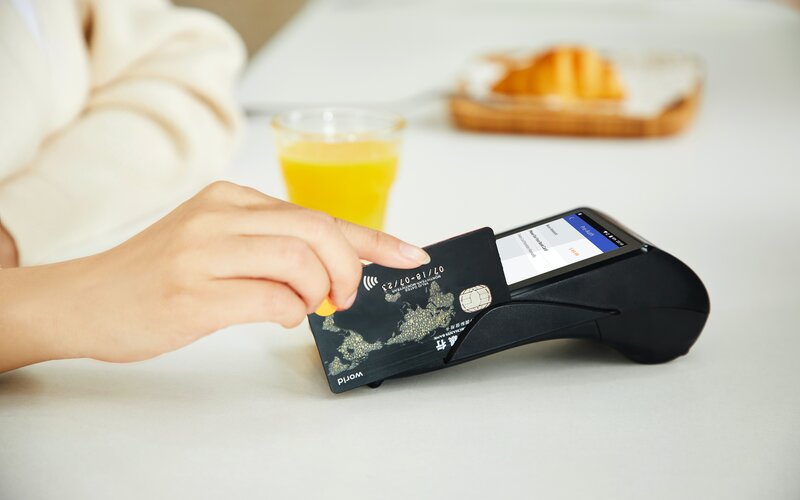
Can students get credit cards in Australia?

Quick Guide to Visa and Mastercard
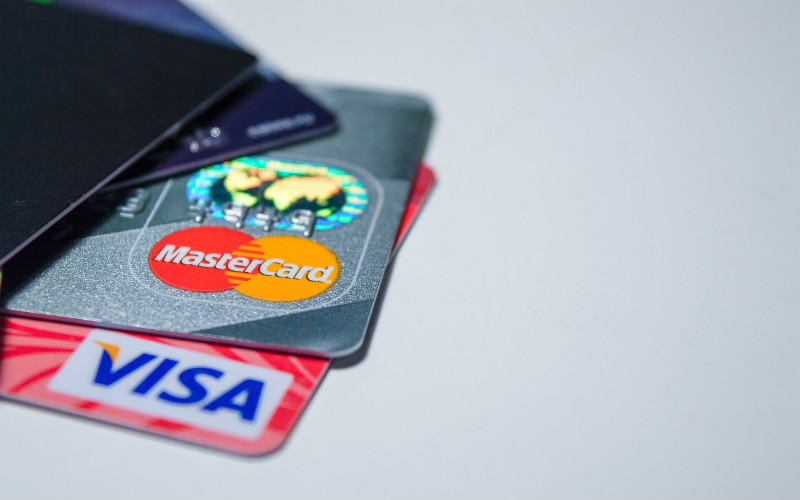
Everything you need to know about direct debits

Interest on credit cards: How does it work?

How much to save for a trip to Europe

Which credit cards have free airport lounge access?
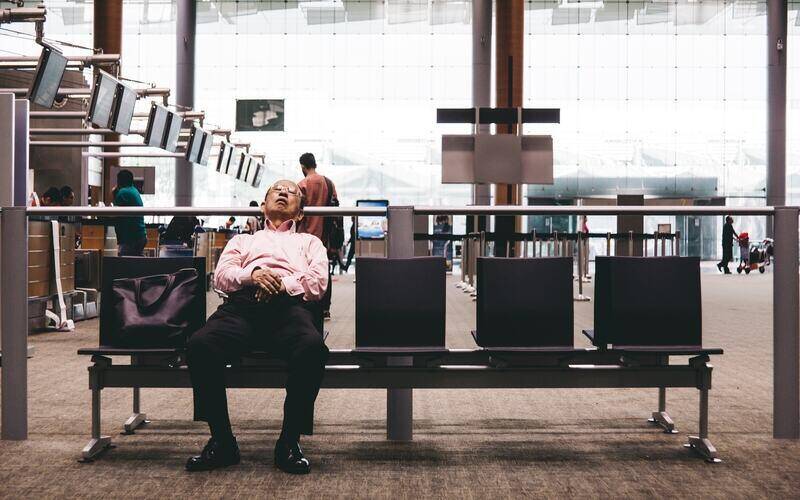
Credit cards for people with bad credit: What’s the catch?

Which credit cards have the longest interest free periods?
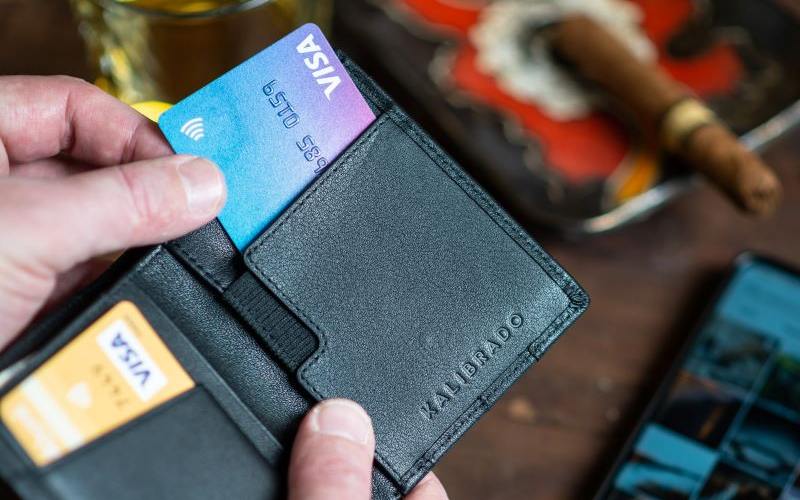
What are the top apps for saving money on groceries?

What are the pros and cons of automatic bill payments?
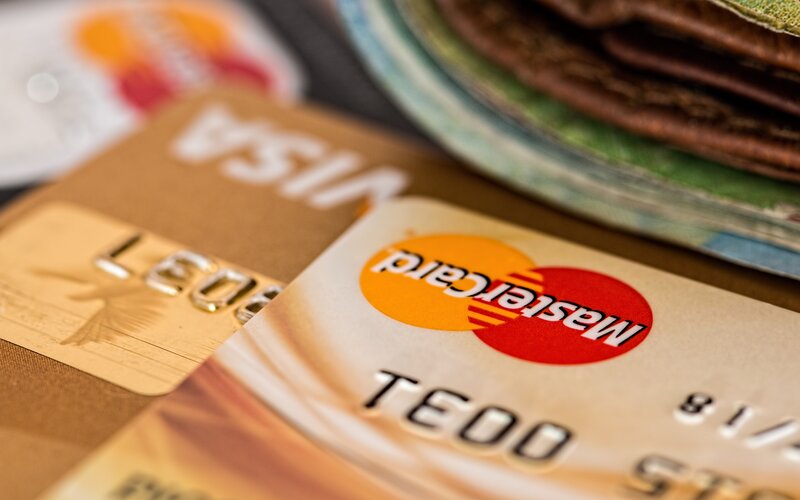
Should I press savings, credit or cheque on a EFTPOS machine?
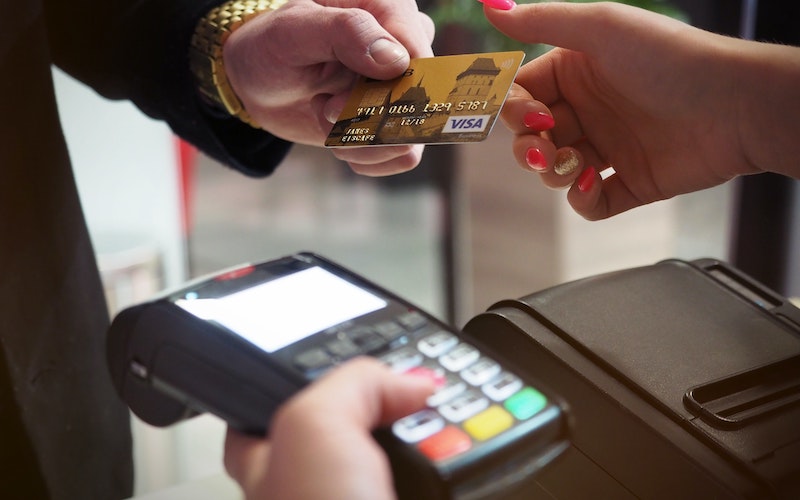
What are the benefits (and drawbacks) of a credit card?
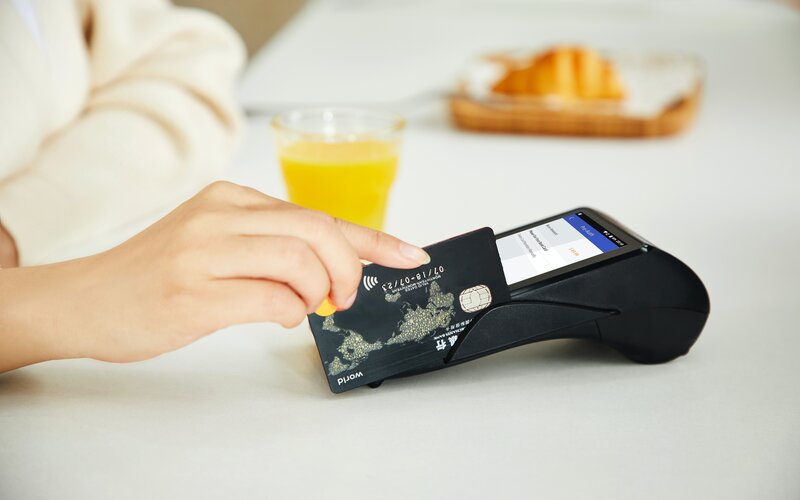
Does your credit card limit matter?

What is the most affordable food box delivery service?

Credit cards for beginners: how they work

How does a credit score work?
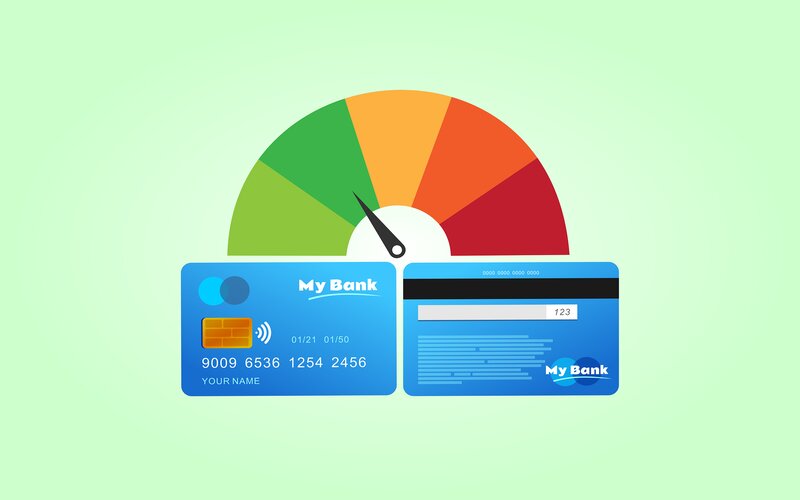
Editorial Promise
Savings.com.au follows a strict editorial policy, so you can trust that we’re putting your interests first. All of our content is authored by highly qualified professionals and edited by subject matter experts who ensure everything we publish is objective, accurate and trustworthy.
 Dominic Beattie
Dominic BeattieEditor at Savings.com.au
Dominic Beattie is the Editor of Savings.com.au, Group Editor for the wider InfoChoice Group, and host of The Savings Tip Jar podcast alongside Harrison Astbury. Previously working as a finance journalist, Dominic has been publishing articles on finance, business and economics since 2015, and helped launch Savings.com.au as finance news and comparison site in 2018.
© 2025 Savings.com.au · AFSL and Australian Credit License Number 515843
The entire market was not considered in selecting the above products. Rather, a cut-down portion of the market has been considered. Some providers' products may not be available in all states. To be considered, the product and rate must be clearly published on the product provider's web site. Savings.com.au, yourmortgage.com.au, yourinvestmentpropertymag.com.au, and Performance Drive are part of the InfoChoice Group. In the interests of full disclosure, the InfoChoice Group are associated with the Firstmac Group. Read about how InfoChoice Group manages potential conflicts of interest, along how we get paid.
Savings.com.au Pty Ltd ACN 161 358 363 operates as an Australian Financial Services Licensee and an Australian Credit Licensee Number 515843. Savings.com.au is a general information provider and in giving you general product information, Savings.com.au is not making any suggestion or recommendation about any particular product and all market products may not be considered. If you decide to apply for a credit product listed on Savings.com.au, you will deal directly with a credit provider, and not with Savings.com.au. Rates and product information should be confirmed with the relevant credit provider. For more information, read Savings.com.au's Financial Services and Credit Guide (FSCG). The information provided constitutes information which is general in nature and has not taken into account any of your personal objectives, financial situation, or needs. Savings.com.au may receive a fee for products displayed.
Explore the InfoChoice Group network: InfoChoice · Your Mortgage · Your Investment Property
Our company, Savings.com.au, has obtained accreditation as a data recipient for the Consumer Data Right (CDR). You can view our CDR policy by clicking on this link.
Important information
Savings.com.au provides general information and comparison services to help you make informed financial decisions. We do not cover every product or provider in the market. Our service is free to you because we receive compensation from product providers for sponsored placements, advertisements, and referrals. Importantly, these commercial relationships do not influence our editorial integrity.
For more detailed information, please refer to our How We Get Paid, Managing Conflicts of Interest, and Editorial Guidelines pages.
At Savings.com.au, we are passionate about helping Australians make informed financial decisions. Our dedicated editorial team works tirelessly to provide you with accurate, relevant, and unbiased information. We pride ourselves on maintaining a strict separation between our editorial and commercial teams, ensuring that the content you read is based purely on merit and not influenced by commercial interests.
Learn more about our commitment to editorial integrity in our Editorial Guidelines.
Our service is free for you, thanks to support from our partners through sponsored placements, ads, and referrals. We earn compensation by promoting products, referring you, or when you click on a product link. You might also see ads in emails, sponsored content, or directly on our site.
For more details, see How We Get Paid.
We strive to cover a broad range of products, providers, and services; however, we do not cover the entire market. Products in our comparison tables are sorted based on various factors, including product features, interest rates, fees, popularity, and commercial arrangements.
Some products will be marked as promoted, featured or sponsored and may appear prominently in the tables regardless of their attributes.
Additionally, certain products may present forms designed to refer you to associated companies (e.g. our mortgage broker partner) who may be able to assist you with products from the brand you selected. We may receive a fee for this referral.
You can customise your search using our sorting and filtering tools to prioritise what matters most to you, although we do not compare all features and some results associated with commercial arrangements may still appear.
For more details, visit How We Get Paid and Managing Conflicts of Interest.
For home loans, the base criteria include a $500,000 loan amount over 30 years. For car loans, the base criteria include a $30,000 loan over 5 years. For personal loans, the base criteria include a $20,000 loan over 5 years. These rates are only examples and may not include all fees and charges.
*The Comparison rate is based on a $150,000 loan over 25 years. Warning: this comparison rate is true only for this example and may not include all fees and charges. Different terms, fees or other loan amounts might result in a different comparison rate.
Monthly repayment figures are estimates that exclude fees. These estimates are based on the advertised rates for the specified term and loan amount. Actual repayments will depend on your circumstances and interest rate changes.
Monthly repayments, once the base criteria are altered by the user, will be based on the selected products’ advertised rates and determined by the loan amount, repayment type, loan term and LVR as input by the user/you.
Savings.com.au is proudly part of the InfoChoice Group, which includes InfoChoice.com.au, YourMortgage.com.au, YourInvestmentPropertyMag.com.au, and PerformanceDrive.com.au. The InfoChoice Group is associated with the Firstmac Group.
We may include products and services from loans.com.au, CarLoans.com.au, OnlineAuto.com.au, and YourMortgageBroker Pty Ltd, all associated with the Firstmac Group. Importantly, these brands are treated like any other commercial partner.
Learn more about how we manage conflicts of interest.
The information provided by Savings.com.au is general in nature and does not take into account your personal objectives, financial situation, or needs. We recommend seeking independent financial advice before making any financial decisions. Before acquiring any financial product, obtain and read the relevant Product Disclosure Statement (PDS), Target Market Determination (TMD), and any other offer documents.
Rates and product information should be confirmed with the relevant credit provider. For more information, read Savings.com.au’s Financial Services and Credit Guide (FSCG).
Get rate alerts
Stay up to date with the latest rate movements across home loans, term deposits, savings accounts and more.
By subscribing you agree to our privacy policy.
Save Smarter
Join thousands of Aussies getting smarter with personal finance news, guides, expert insights and more in our regular roundup email.
By subscribing you agree to our privacy policy.
Send me the pod
Never miss an ep! Receive episode alerts plus special invites to have your questions or savings tips read out on the show.
By subscribing you agree to our privacy policy.




















